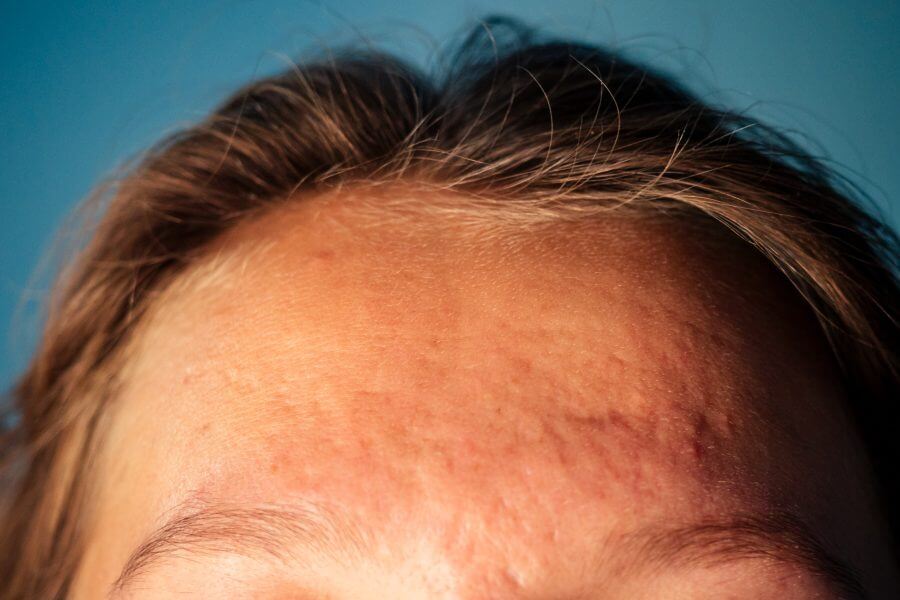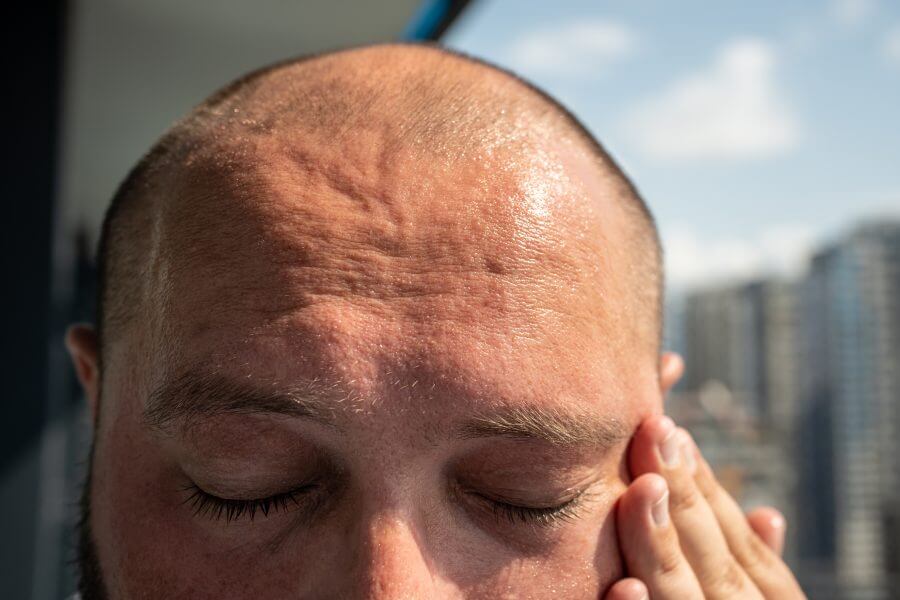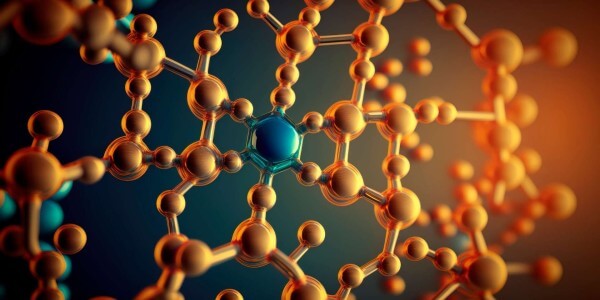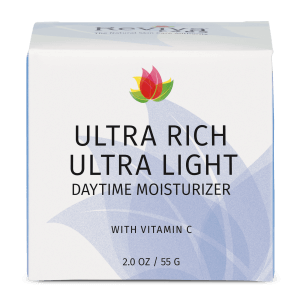Ingredients, Reviva Labs, Skin Care
Understanding and Treating a Red, Flaky Forehead
Dealing with a red and flaky forehead can be both frustrating and uncomfortable. This common issue can stem from various causes, including environmental factors, skin conditions, and improper skincare routines. Identifying the root cause is crucial for effective treatment and prevention. Here’s a comprehensive guide to help you understand and manage this skin concern.
Common Causes of a Red, Flaky Forehead
Several factors can contribute to a red and flaky forehead. One of the most common is seborrheic dermatitis, a condition that causes red, scaly patches on the skin. This is often linked to an overgrowth of yeast on the skin and is more prevalent in individuals with oily skin. Other potential causes include eczema, psoriasis, and allergic reactions to skincare products or environmental irritants. Sometimes, simply using harsh cleansers or over-exfoliating can strip the skin of its natural oils, leading to dryness and flakiness.
Hormonal changes can also play a role. For instance, teenagers and pregnant women may experience skin fluctuations due to hormonal imbalances. Stress and lack of sleep can exacerbate these issues, leading to flare-ups and prolonged skin irritation.
Reviva Labs’ Calming Renewal Serum and Calming Rejuvenation Crème were specifically formulated to help soothe and calm inflamed skin.
Daily Skincare Routine Adjustments
Adjusting your daily skincare routine can significantly improve the condition of your forehead. Start with a gentle, hydrating cleanser that removes impurities without stripping away essential moisture. Avoid cleansers with alcohol, sulfates, and synthetic fragrances, as these can aggravate dryness and redness.
Incorporating a soothing toner can help restore the skin’s natural pH balance. Look for ingredients like aloe vera, chamomile, and witch hazel, known for their calming and anti-inflammatory properties. Applying a lightweight, non-comedogenic moisturizer is essential to keep your skin hydrated throughout the day. Opt for products with ingredients such as hyaluronic acid, glycerin, and ceramides, which help retain moisture and strengthen the skin barrier.
Targeted Treatments and Remedies
When dealing with persistent redness and flakiness, targeted treatments can offer relief. Over-the-counter hydrocortisone creams can reduce inflammation and soothe irritated skin. However, these should be used sparingly and under the guidance of a dermatologist, as prolonged use can lead to thinning of the skin.
Natural remedies can also be beneficial. For instance, applying a thin layer of honey to the affected area can help due to its natural antibacterial and anti-inflammatory properties. Leave it on for about 20 minutes before rinsing off with lukewarm water. Similarly, aloe vera gel can provide instant soothing relief and promote healing.
Diet and Lifestyle Considerations
What you eat can have a profound impact on your skin’s health. A diet rich in antioxidants, omega-3 fatty acids, and vitamins A, C, and E can support skin health and reduce inflammation. Incorporate plenty of fruits, vegetables, nuts, and fish into your diet. Staying hydrated by drinking plenty of water is also crucial for maintaining skin elasticity and overall health.
Stress management is another important aspect. High stress levels can trigger skin flare-ups and exacerbate existing conditions. Techniques such as meditation, yoga, and regular exercise can help manage stress and promote overall well-being. Ensuring you get enough sleep each night is equally important, as the skin repairs itself during rest.
Consulting a Dermatologist
If home remedies and over-the-counter treatments don’t yield results, it may be time to consult a dermatologist. They can provide a thorough examination and recommend prescription treatments tailored to your specific condition. Prescription topical treatments, oral medications, or light therapy might be necessary for severe cases of dermatitis or psoriasis.
Dermatologists can also conduct patch tests to identify potential allergens causing the irritation. This can be particularly helpful if you suspect that your skincare products or environmental factors are triggering the flare-ups. Once the allergen is identified, you can avoid it and seek alternative products that are more suitable for your skin.
Preventive Measures
Prevention is always better than cure. Adopting a skincare routine that focuses on hydration and gentle care can prevent recurrence. Regularly using a broad-spectrum sunscreen with an SPF of 30 or higher can protect your skin from harmful UV rays, which can worsen redness and flakiness. Sunscreen should be applied daily, even on cloudy days, as UV rays can penetrate through clouds and windows.
Maintaining a clean environment can also help. Regularly washing pillowcases, hats, and any item that comes into contact with your forehead can prevent the buildup of bacteria and oils that can clog pores and cause irritation.
The Importance of Patience and Consistency
Treating a red and flaky forehead requires patience and consistency. Skin conditions often take time to improve, and it’s essential to stick to your skincare routine even if you don’t see immediate results. Avoid the temptation to try multiple new products simultaneously, as this can overwhelm your skin and make it harder to identify what’s working.
Consistency in applying treatments and following preventive measures can lead to significant improvements over time. Celebrate small victories and remember that gradual progress is still progress. Keeping a skincare journal to track changes and note any triggers can also be beneficial in managing your condition effectively.
Hydration from the Inside Out
While topical treatments are essential, hydrating your skin from within is equally important. Drinking adequate amounts of water daily ensures that your skin stays supple and resilient. Herbal teas, such as chamomile or green tea, can also be beneficial due to their anti-inflammatory properties.
Including hydrating foods in your diet, like cucumbers, watermelon, and leafy greens, can provide your skin with an extra boost of moisture. These foods are high in water content and essential nutrients that support skin health.
A Holistic Approach to Skin Health
Adopting a holistic approach to skin health can yield the best results. This means considering all aspects of your lifestyle, from diet and stress management to the products you use and your daily routines. Regularly engaging in physical activity not only improves circulation but also helps in managing stress, which in turn can reduce skin flare-ups.
Mindfulness practices, such as meditation and deep breathing exercises, can help in keeping stress levels in check. Stress has a direct impact on the skin, often leading to increased sensitivity and breakouts. By incorporating mindfulness into your daily routine, you can maintain a calmer mind and a healthier complexion.

Community and Support
Sometimes, dealing with persistent skin issues can be overwhelming. Seeking support from communities, either online or in-person, can provide emotional relief and practical tips. Many people face similar issues, and sharing experiences can help you feel less isolated and more empowered to manage your skin condition.
Online forums and social media groups focused on skincare can be valuable resources. These platforms often have members who share their personal experiences, product recommendations, and tips for managing specific skin concerns. However, it’s important to approach such advice with caution and verify information with credible sources or healthcare professionals.
Final Thoughts on Skin Health
Maintaining healthy skin is an ongoing process that requires attention and care. A red and flaky forehead can be managed effectively with the right combination of skincare products, lifestyle adjustments, and professional guidance. By understanding the underlying causes and adopting a comprehensive approach to treatment and prevention, you can achieve clearer, healthier skin.
A commitment to gentle, hydrating skincare routines, along with mindful lifestyle choices, can make a significant difference. Remember to be patient and consistent in your efforts, and don’t hesitate to seek professional advice when needed. With time and dedication, you can overcome the challenges of a red and flaky forehead and enjoy the confidence that comes with healthy, radiant skin.











